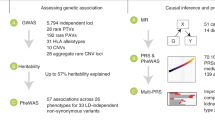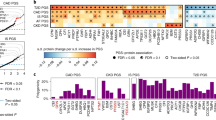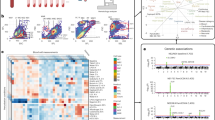Abstract
Plasma chitotriosidase activity is used for diagnosis and monitoring of Gaucher disease. However, homozygous duplication of a 24 bp region in exon 10 of the chitotriosidase gene (CHIT1) abolishes enzyme activity, limiting its use as a biomarker in Gaucher disease. This study investigates the allele frequency of the 24 bp duplication, in both the general Korean population and in patients with Gaucher disease. Fifteen Korean patients with Gaucher disease and 231 Korean normal individuals were enrolled. Genotyping was performed to identify the 24 bp duplication in exon 10 of CHIT1 using DNA extracted from peripheral leukocytes or dried blood spots. Two patients with Gaucher disease (13.3%) had normal plasma chitotriosidase activity, and carried a homozygous 24 bp duplication of exon 10 of the CHIT1 gene. Nine patients were heterozygote carriers (60.0%). Of the normal 231 Korean individuals, heterozygous duplication was detected in 109 individuals (47.2%) and homozygous duplication in 75 (32.5%). The allele frequency was 56.1% (95% confidence interval, 49.4–62.7%). The frequency of the 24 bp duplication was remarkably high in both Korean patients with Gaucher disease and in the normal population, limiting the efficacy of chitotriosidase as a biomarker in Gaucher disease in Korea. New biomarkers are required that consider the genetic characteristics of different populations.
Similar content being viewed by others
Log in or create a free account to read this content
Gain free access to this article, as well as selected content from this journal and more on nature.com
or
References
Scriver, CR, Beaudet, AL, Sly, WS & Valle, D The Metabolic and Molecular Bases of Inherited Disease 8th edn (McGraw-Hill: New York, NY, USA, 2001).
Shafit-Zagardo, B, Devine, EA, Smith, M, Arredondo-Vega, F & Desnick, RJ Assignment of the gene for acid beta-glucosidase to human chromosome 1. Am. J. Hum. Genet. 33, 564–575 (1981).
Lee, JY, Lee, BH, Kim, GH, Jung, CW, Lee, J, Choi, JH et al. Clinical and genetic characteristics of Gaucher disease according to phenotypic subgroups. Korean J. Pediatr. 55, 48–53 (2012).
Lee, BH, Kim, DY, Kim, GH, Cho, KJ, Yoon, HK & Yoo, HW Progressive mesenteric lymphadenopathy with protein-losing enteropathy; a devastating complication in Gaucher disease. Mol. Genet. Metab. 105, 522–524 (2012).
Malaguarnera, L Chitotriosidase: the yin and yang. Cell. Mol. Life Sci. 63, 3018–3029 (2006).
Elias, JA, Homer, RJ, Hamid, Q & Lee, CG Chitinases and chitinase-like proteins in T(H)2 inflammation and asthma. J. Allergy Clin. Immunol. 116, 497–500 (2005).
Hollak, CE, van Weely, S, van Oers, MH & Aerts, JM Marked elevation of plasma chitotriosidase activity. A novel hallmark of Gaucher disease. J. Clin. Invest. 93, 1288–1292 (1994).
Guo, Y, He, W, Boer, AM, Wevers, RA, de Bruijn, AM, Groener, JE et al. Elevated plasma chitotriosidase activity in various lysosomal storage disorders. J. Inherit. Metab. Dis. 18, 717–722 (1995).
Cabrera-Salazar, MA, O'Rourke, E, Henderson, N, Wessel, H & Barranger, JA Correlation of surrogate markers of Gaucher disease. Implications for long-term follow up of enzyme replacement therapy. Clin. Chim. Acta 344, 101–107 (2004).
Boot, RG, Renkema, GH, Verhoek, M, Strijland, A, Bliek, J, de Meulemeester, TM et al. The human chitotriosidase gene. Nature of inherited enzyme deficiency. J. Biol. Chem. 273, 25680–25685 (1998).
Artieda, M, Cenarro, A, Ganan, A, Jerico, I, Gonzalvo, C, Casado, JM et al. Serum chitotriosidase activity is increased in subjects with atherosclerosis disease. Arterioscler. Thrombo. Vasc. Biol. 23, 1645–1652 (2003).
Morales-Medina, JC, Mejorada, A, Romero-Curiel, A, Aguilar-Alonso, P, Leon-Chavez, BA, Gamboa, C et al. Neonatal administration of N-omega-nitro-L-arginine induces permanent decrease in NO levels and hyperresponsiveness to locomotor activity by D-amphetamine in postpubertal rats. Neuropharmacology 55, 1313–1320 (2008).
Brunner, JK, Scholl-Burgi, S, Hossinger, D, Wondrak, P, Prelog, M & Zimmerhackl, LB Chitotriosidase activity in juvenile idiopathic arthritis. Rheumatol. Int. 28, 949–950 (2008).
Lee, P, Waalen, J, Crain, K, Smargon, A & Beutler, E Human chitotriosidase polymorphisms G354R and A442V associated with reduced enzyme activity. Blood Cells Mol. Dis. 39, 353–360 (2007).
Chien, YH, Chen, JH & Hwu, WL Plasma chitotriosidase activity and malaria. Clin. Chim. Acta. 353, 215 author reply 217 (2005).
Grace, ME, Balwani, M, Nazarenko, I, Prakash-Cheng, A & Desnick, RJ Type 1 Gaucher disease: null and hypomorphic novel chitotriosidase mutations-implications for diagnosis and therapeutic monitoring. Hum. Mutat. 28, 866–873 (2007).
Boot, RG, Blommaart, EF, Swart, E, Ghauharali-van der Vlugt, K, Bijl, N ., Moe, C et al. Identification of a novel acidic mammalian chitinase distinct from chitotriosidase. J. Biol. Chem. 276, 6770–6778 (2001).
van Eijk, M, van Roomen, CP, Renkema, GH, Bussink, AP, Andrews, L, Blommaart, EF et al. Characterization of human phagocyte-derived chitotriosidase, a component of innate immunity. Int. Immunol. 17, 1505–1512 (2005).
Malaguarnera, L, Simpore, J, Prodi, DA, Angius, A, Sassu, A, Persico, I et al. A 24-bp duplication in exon 10 of human chitotriosidase gene from the sub-Saharan to the Mediterranean area: role of parasitic diseases and environmental conditions. Genes. Immun 4, 570–574 (2003).
Lehrnbecher, T, Bernig, T, Hanisch, M, Koehl, U, Behl, M, Reinhardt, D et al. Common genetic variants in the interleukin-6 and chitotriosidase genes are associated with the risk for serious infection in children undergoing therapy for acute myeloid leukemia. Leukemia. 19, 1745–1750 (2005).
Masoud, M, Rudensky, B, Elstein, D & Zimran, A Chitotriosidase deficiency in survivors of Candida sepsis. Blood Cells Mol. Dis. 29, 116–118 (2002).
Choi, EH, Taylor, JG, Foster, CB, Walsh, TJ, Anttila, VJ, Ruutu, T et al. Common polymorphisms in critical genes of innate immunity do not contribute to the risk for chronic disseminated candidiasis in adult leukemia patients. Med. Mycol. 43, 349–353 (2005).
Boot, RG, Verhoek, M, de Fost, M, Hollak, CE, Maas, M, Bleijlevens, B et al. Marked elevation of the chemokine CCL18/PARC in Gaucher disease: a novel surrogate marker for assessing therapeutic intervention. Blood 103, 33–39 (2004).
Acknowledgements
This study was supported by a grant from the Korean Ministry for Health, Welfare and Family Affairs (Grant No. A120367).
Author information
Authors and Affiliations
Corresponding author
Ethics declarations
Competing interests
The authors declare no conflict of interest.
Rights and permissions
About this article
Cite this article
Woo, K., Lee, B., Heo, S. et al. Allele frequency of a 24 bp duplication in exon 10 of the CHIT1 gene in the general Korean population and in Korean patients with Gaucher disease. J Hum Genet 59, 276–279 (2014). https://doi.org/10.1038/jhg.2014.16
Received:
Revised:
Accepted:
Published:
Issue date:
DOI: https://doi.org/10.1038/jhg.2014.16



